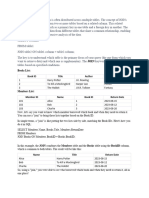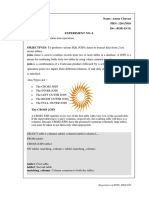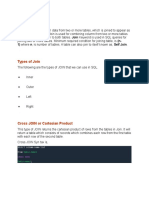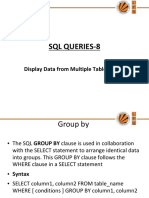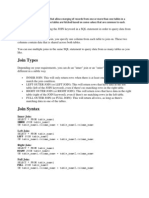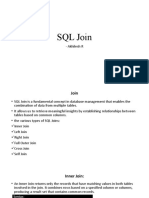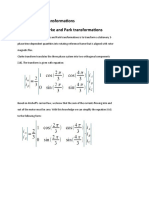0% found this document useful (0 votes)
73 views9 pagesLab - 5 - Retrieving Data From Multiple Tables
1) This document discusses different types of SQL JOIN clauses that can be used to combine data from multiple tables, including inner joins, outer joins, natural joins, cross joins, and self joins.
2) It provides the syntax for each type of join and examples of how to write SQL queries using joins to retrieve data from two or more related tables.
3) Joins can be combined with additional SQL clauses like WHERE, GROUP BY, and HAVING to filter, group, and perform aggregations on the joined data.
Uploaded by
Karam SalahCopyright
© © All Rights Reserved
We take content rights seriously. If you suspect this is your content, claim it here.
Available Formats
Download as PDF, TXT or read online on Scribd
0% found this document useful (0 votes)
73 views9 pagesLab - 5 - Retrieving Data From Multiple Tables
1) This document discusses different types of SQL JOIN clauses that can be used to combine data from multiple tables, including inner joins, outer joins, natural joins, cross joins, and self joins.
2) It provides the syntax for each type of join and examples of how to write SQL queries using joins to retrieve data from two or more related tables.
3) Joins can be combined with additional SQL clauses like WHERE, GROUP BY, and HAVING to filter, group, and perform aggregations on the joined data.
Uploaded by
Karam SalahCopyright
© © All Rights Reserved
We take content rights seriously. If you suspect this is your content, claim it here.
Available Formats
Download as PDF, TXT or read online on Scribd
/ 9




